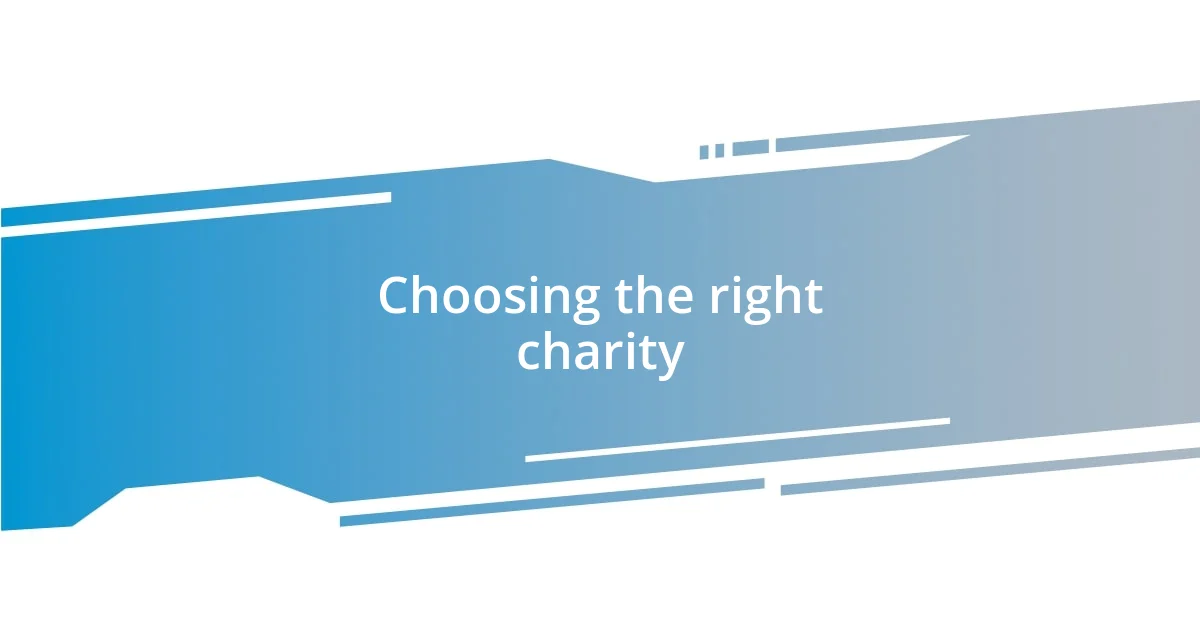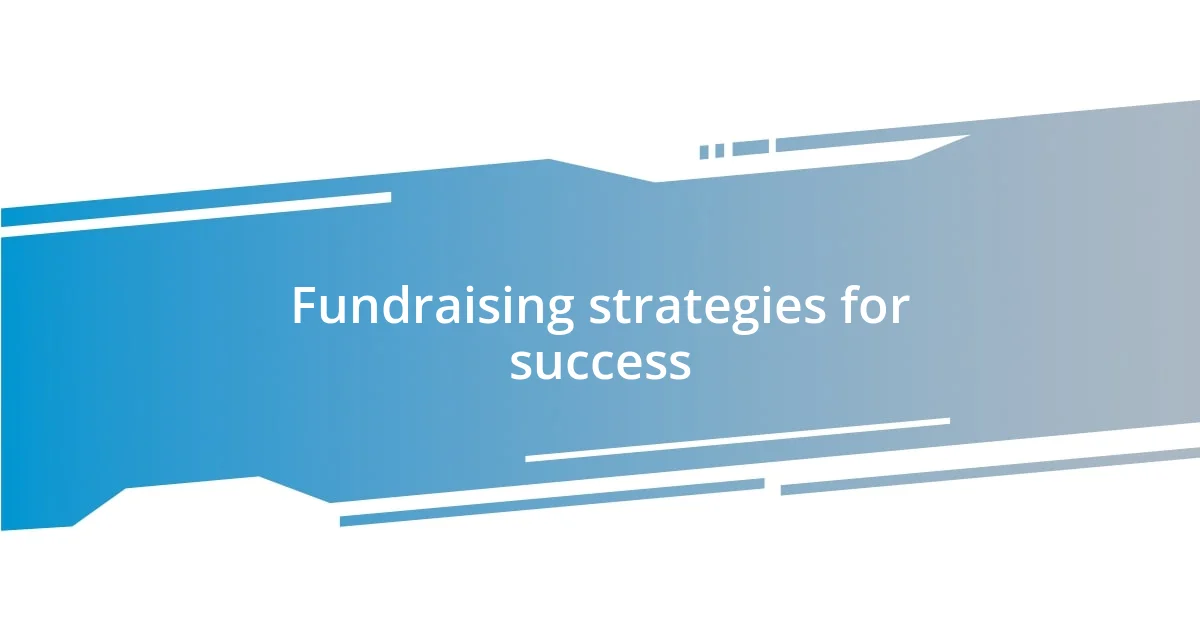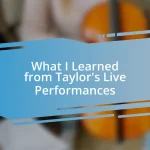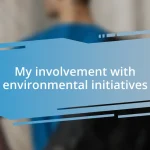Key takeaways:
- Local charities serve as vital lifelines, addressing unique community needs through active engagement and support from residents.
- Effective volunteering involves preparation and deep connection with community members, enhancing the impact of one’s efforts.
- Building partnerships with other organizations amplifies charitable efforts and fosters a sense of unity and collective purpose within the community.

Understanding local charities
When I first learned about local charities, I was amazed at the profound impact they have on the community. Each organization has a unique mission, often rooted in the specific needs of the neighborhood, which can range from providing food security to offering educational support. Have you ever thought about how many lives might touch a single charitable project? It’s quite eye-opening.
Consider a small food pantry that I stumbled upon in my neighborhood. I volunteered there for a few months, and witnessing the gratitude in the eyes of families who received support was transformative. It made me realize that local charities are not just organizations; they are lifelines that foster hope and connection among individuals who often feel isolated in their struggles.
Local charities thrive on the contributions of community members, whether through donations, volunteer work, or simply spreading the word about their cause. I often wonder how different our lives would be if everyone took a moment to understand the role these organizations play. The relationships built through these charities create a sense of belonging, showing us that when we support one another, we really can make a significant difference.

Identifying community needs
When I began my journey into supporting local charities, I quickly learned that identifying community needs isn’t always straightforward. It’s often about deeply listening to residents and understanding their unique challenges. For example, during a local community meeting I attended, individuals shared their difficulties accessing mental health resources. I was surprised by how many people felt alone in their struggles, highlighting a significant gap in support services.
One memorable experience was meeting a single mother at a charity event who expressed her fears about childcare issues while seeking a job. Her story opened my eyes to the pressing need for affordable childcare services in our area. This interaction reinforced my belief that talking to community members is crucial for recognizing the true needs they face every day.
Sometimes, I wonder what it would be like if more people actively sought out these conversations. Each story revealed to me how the solutions we propose must be community-driven to be effective. By engaging with local voices, I’ve found that supporting charities becomes more than just giving; it’s about fostering genuine connections and addressing the real issues that impact lives.
| Community Needs | Examples |
|---|---|
| Food Security | Food pantries, meal programs |
| Mental Health Resources | Support groups, counseling services |
| Childcare Access | Affordable daycare options |

Choosing the right charity
Choosing the right charity can feel overwhelming, especially with so many causes vying for attention. I remember standing in front of a community board filled with flyers, feeling a mix of excitement and uncertainty about where to direct my support. To narrow down your options, it’s essential to reflect on what resonates with you personally. Are you passionate about environmental issues, education, or perhaps health care? Focusing on what matters most to you gives clarity and direction.
Here are several key factors to consider:
- Mission Alignment: Does the charity’s mission resonate with your values?
- Transparency: Are they open about their finances and operations?
- Impact Evidence: Can they demonstrate their success and the difference they’ve made?
- Community Engagement: Do they involve community members in their programs and decisions?
- Volunteer Opportunities: Is there a way for you to get involved beyond just donating?
These criteria have guided me through my journey. Each time I supported a charity, I couldn’t help but relate the mission to my experiences. For instance, when I chose to donate to an organization that provides tutoring for underprivileged children, I reflected on how a dedicated mentor in my own life turned my academic struggles into success stories. Finding the right charity is more than about commitment; it’s about making connections that align with our passions and values.

Volunteering your time effectively
Volunteering my time effectively has been a transformative experience. I remember one Saturday afternoon when I signed up to help at a local food bank. As I sorted through boxes of donations, each item carried a story; a can of soup might feed a family struggling to make ends meet. I realized that even a few hours of my time could make a significant difference, not just in logistics but in human connection.
I often ponder how many volunteers approach their work with a mindset focused solely on the task rather than the people behind it. For instance, while assisting at a community garden, I learned about the neighbors who relied on its produce. Their gratitude was palpable, reminding me that I wasn’t just pulling weeds; I was contributing to their well-being and sense of community. This engagement shifted my perspective every time I volunteered, making the experience feel more meaningful.
To truly make an impact, I’ve found that effective volunteering requires commitment beyond just showing up. I’ve learned to prepare ahead of time – whether that means researching the charity’s mission or understanding the specific role I’ll play. One time, I arrived at a literacy program with a stack of books ready to share, and I was greeted with excitement. It was an unforgettable moment—simple yet profound, as it highlighted how being prepared allows us to connect deeply with those we aim to help. Don’t you see how the right preparation can amplify our contribution?

Fundraising strategies for success
Fundraising strategies are essential for making a lasting impact, and my experiences have shown me the value of creativity and connection. For one project, I organized a bake sale but instead of just selling treats, I invited local musicians to perform. The combination of food and live music transformed the event into a community celebration. Not only did we raise more money, but we also fostered a sense of togetherness. How often do you see people come together like that for a good cause? It’s truly magical.
Another approach I’ve found effective is leveraging online platforms for crowdfunding. I once created a campaign on a social media platform, sharing my journey and the stories of those we aimed to help. By using heartfelt videos and photos, I made it personal and relatable. It wasn’t just about asking for money; it was about telling a story that resonated with others. This authenticity helped to inspire friends and strangers alike to chip in. Isn’t that the power of storytelling? You show people why it matters, and they become invested.
In my experience, hosting themed events has been a fantastic way to boost fundraising efforts. I recall a charity dinner where each table was dedicated to a different cause the charity supported. I crafted a presentation introducing each mission while guests enjoyed a meal that reflected the essence of those causes. People were engaged and eager to contribute because they felt a personal connection to each story shared. It’s extraordinary how creating an experience around fundraising can open hearts and wallets simultaneously. Have you considered how impactful an experience can be in inspiring generosity?

Building community partnerships
Building strong community partnerships has been one of the most rewarding aspects of my charitable journey. I remember my first collaboration with a local school to set up a mentorship program. It was eye-opening to see how much enthusiasm both the students and the volunteers had. The energy in that room as we shared our experiences and wisdom was invigorating. How often do we get to witness genuine excitement for learning and growth? The connections formed that day were not just beneficial for the students; they sparked friendships among volunteers that continue to thrive.
Engaging with other organizations has also shown me the power of collective effort. I recall a project where I teamed up with several local charities for a community clean-up day. Each of us brought unique resources, skills, and volunteer bases. Watching our collective vision come to life was exhilarating. We weren’t just cleaning parks; we were building a network of support and camaraderie that rippled through the community. It made me realize that when we join forces, our impact multiplies. How can individual efforts ever match the strength of a united front?
One of my favorite partnerships was with a local artist who created murals to beautify our community spaces. We organized workshops where community members could paint alongside her, tapping into their creativity while discussing issues that mattered to them. The joy on their faces as they created was infectious, and the murals themselves became symbols of hope and unity. This experience really brought home the message that partnerships can elevate our work beyond the immediate task at hand. Have you ever experienced a collaboration that transformed not just a project, but the people involved? I cherish those moments—they deeply enrich not just our work, but our lives.

Measuring impact of support
When measuring the impact of support for local charities, I believe it’s essential to look beyond just the numbers. For instance, during one fundraising campaign, I kept track of not only the funds raised but also the community engagement levels. After interviewing participants, I discovered that many felt more connected to local issues after attending our events. It struck me how qualitative results can be just as powerful as quantitative data. How often do we fully appreciate the broader effects of our support?
In another instance, I implemented feedback surveys after a charity event, asking attendees how they felt about their experience. The responses revealed profound insights—people expressed feeling inspired to take personal action in their communities. It’s interesting how a single event can spark a wave of motivation! From my perspective, these intangible accomplishments, like community involvement and personal growth, are critical measures of success. Do we always consider what happens long after the event is over?
Lastly, I often reflect on the stories shared during our fundraising efforts. Each story became a testament to the lives we’ve touched, reinforcing the notion that impact is multifaceted. For example, one recipient of our aid wrote a heartfelt letter describing how our support helped her regain her confidence and pursue her dreams. It’s these deeply personal narratives that resonate most with me. How can we quantify the joy and hope sparked in someone’s heart? I find such stories are the truest indicators of our impact—they hold the potential to inspire others to get involved and make a difference.














